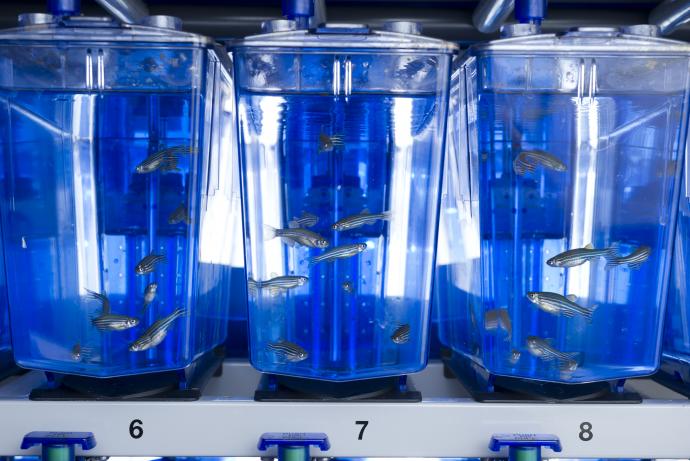The iSafeRabbit High Accuracy QSARs (HA-QSARs) were developed in response to the 2014 NC3Rs CRACK IT QSARs Mix Challenge (NC3Rs, 2014) sponsored by Shell to predict the skin/eye irritation potential of chemical substances and mixtures in the petrochemicals industry. To maximise its application, the scope of iSafeRabbit HA-QSARs needs to be extended and validated against new chemicals such as consumer products. This will facilitate a wide-scale use of iSafeRabbit HA-QSARs as an in silico alternative to in vivo experimentation for various applications including chemicals registration under regulatory frameworks and screening of the irritation potential of products/formulations during their early stage of development.
As of May 2019 iSafeRabbit is now being implemented in the iSafeRat (in Silico Algorithms For Environmental Risk And Toxicity) skin/eye irritation/corrosion prediction model available online.
Experimental tests must be performed to evaluate the skin/eye irritation potential of a substance. Currently, this means an in vitro test first, but if inconclusive it may be followed by OECD 404 and OECD 405 in vivo studies, for skin and eye irritation, respectively (OECD 2002; OECD 2012).
The ban on animal testing in the EU from March 2004 on cosmetic products has led to the development of alternative approaches to in vivo testing. However, there are still many industries (e.g. fragrances, surfactants) including manufacturers of cosmetic ingredients that fall under the REACH regulation, forcing them to conduct experimentation which may include in vivo irritation studies if equivocal results are observed in vitro.
For skin and eye irritation, existing in vitro methods and in silico approaches including read-across, QSARs and structural alert tools are available. However, in vitro methods are not equally reliable across the chemical domain and the usefulness of read-across and structural alert tools is questionable due to varying patterns of irritation potential within the same chemical class, thus increasing the chances of misclassification via extrapolation.
To date QSARs have not been completely successful for predicting skin/eye irritation of substances or mixtures. The QSARs Mix Challenge sponsored by Shell was aimed at the development of a reliable QSAR model to predict the skin and eye irritation potential of petrochemical substances as well as mixtures, to replace in vivo studies. iSafeRabbit HA-QSARs has been developed for both irritation endpoints (Sahigara et al., 2016) using a dataset containing in vivo irritation studies validated by toxicologists from KREATiS and their collaborator CEHTRA.
References:
- OECD (2002). Test No. 404: Acute Dermal Irritation/Corrosion, OECD Guidelines for the Testing of Chemicals, Section 4, OECD Publishing, Paris.
- OECD (2012). Test No. 405: Acute Eye Irritation/Corrosion, OECD Guidelines for the Testing of Chemicals, Section 4, OECD Publishing, Paris.
- Sahigara F, Charmeau-Genevois C, Bicherel P, et al. (2016) A High Accuracy QSAR based on rabbit data to predict the human skin irritation potential of individual constituents and mixtures. This poster was presented at the NC3Rs AOP workshop 2016.
- Sahigara F, Charmeau-Genevois C, Bicherel P, et al. (2016) A High Accuracy QSAR based on rabbit data to predict the human eye irritation potential of individual constituents and mixtures. This poster was presented at the NC3Rs AOP workshop 2016.
Based on the mechanism by which irritation is induced, iSafeRabbit models determine the dose causing keratinocyte cytotoxicity, inducing erythema and/or oedema for skin and corneal opacity for eyes. This dose is provided as input to a skin/eye absorption model to work out the internal concentration in the viable epidermis/stroma. These concentrations are plotted against the water solubility of the substances already classified or not based on existing in vivo validated studies. As shown below, the plot is then finally sub-divided into corrosive, irritant and non-irritant zones in a way that is more appropriate for modern day classification than the system developed by Draize et al. for skin (Draize J.H. et al., 1944; ECETOC 1995; ECETOC 1998). The substance will fall into one of these zones, allowing classification under recognised CLP/GHS labelling systems (ECHA, 2015) for skin/eye irritation/ corrosivity endpoints.
When compared to existing irritation models (in vivo and in vitro), iSafeRabbit was associated with a better predictive power using a set of substances with known toxicity for validation (Sahigara et al. 2016, Sahigara et al. 2017). The combination of physicochemical parameters and absorption models provide a response closer to those from in vivo, a clear advantage over read-across and structural alerts that heavily rely on extrapolations.
iSafeRabbit version 1.1 has so far been validated for 12 chemical families and its predictions have a true positive/negative rate of 95% using validated in vivo experimental data as reference (Sahigara et al., 2017). iSafeRabbit HA-QSAR satisfies the five recommended OECD principles for QSAR models making them fit for regulatory purposes. However, the model can be overly conservative for certain chemical families. The reasons for this are still unclear but KREATiS believe that the addition/modification of some physiological parameters such as water-skin permeation coefficient and systemic blood flux are advances that should significantly contribute to a solution for the problem.
QSARs applied early in product development provide a quicker, more informative and significantly cheaper screening option than existing in vitro approaches. iSafeRabbit can also support inverse QSAR methodology, an area of growing interest for industry in identifying the molecular descriptors that allow for more desirable and safer product development based on physiochemical profile.
References:
- Draize JH, Woodard G, and Calvery HO (1944). Methods for the study of irritation and toxicity of substances applied to the skin and mucous membranes. J. Pharmacol. Exp. Ther. 82(3): 377–390.
- ECETOC (1995). Skin irritation and corrosion: Reference chemicals data bank, Technical Report n°66, March 1995.
- ECETOC (1998). Eye irritation: Reference chemicals data bank (second edition), Technical Report n°48(2), June 1998.
- ECHA (2015). Guidance on the application of the CLP criteria. Guidance to Regulation (EC) No 1272/2008 on classification, labelling and packaging (CLP) of substances and mixtures. Version4.1 June 2015.
- Sahigara F, Charmeau-Genevois C, Bicherel P, et al. A High Accuracy QSAR based on rabbit data to predict the human skin irritation potential of individual constituents and mixtures. This poster was presented at the NC3Rs AOP workshop 2016.
- Sahigara F, Charmeau-Genevois C, Bicherel P, et al. A High Accuracy QSAR based on rabbit data to predict the human eye irritation potential of individual constituents and mixtures. This poster was presented at the NC3Rs AOP workshop 2016.
- Sahigara F, Charmeau-Genevois C, Bicherel P, et al. iSafeRabbit High Accuracy QSAR to predict the Skin and Eye Irritation/Corrosion potential of individual constituents and mixtures. This poster was presented at the AOP workshop at the Society of Toxicology meeting 2017.
KREATiS wish to apply iSafeRabbit HA-QSARs for all global regulatory requirements. This implies that the predictions can be used under various regulatory frameworks which still require experimental studies for the two irritation endpoints except in those countries where in vivo studies are still an obligatory regulatory requirement. The model has to cover as many chemical families as possible in a reasonable timeframe, but the availability of valid in vivo data for irritation endpoints can be a challenging task. Most of the available data for irritation endpoints are not validated or not accompanied by enough documentation to justify the validity of study results. KREATiS and CEHTRA teams have already faced these limitations during the QSARs Mix Challenge; as a result, a significant amount of time was spent validating the existing experimental data in a consistent way between the studies
This is equally dependent on the availability of irritation data from various industrial domains. Access to existing data from in vitro and/or in vivo tests on any substances or mixtures beyond those extensively available, would be particularly beneficial. Data from all sources are welcome, especially on cosmetics and household products and reactive substances but also data on active ingredients from pharmaceuticals, pesticides and biocides.
The advanced version of iSafeRabbit HA-QSAR described above aims to definitively replace the existing OECD 404 and 405 guidelines which is performed on rabbits. These studies are invasive and can utilise more than 250 rabbits per year. The model will cover irritation and corrosivity predictions simultaneously (in vitro equivalents may require two separate studies to cover corrosivity using a down to up integrative testing strategy if no information is available on the substance).
While there are already some in vitro studies in place which help to minimise animal testing (for single substances), there are several cases where in vitro studies are inapplicable/insufficient for classification and this may lead to performing in vivo studies. In particular, no in vitro validated stand-alone alternative method is currently available to determine if a substance is irritating to eyes (CLP-Cat 2). Therefore, iSafeRabbit HA-QSARs can be reliably applied for such chemical domains provided the applicability domain requirements of the model are fulfilled. In these cases it may be possible to waive in vivo studies on the basis of a clear result from iSafeRabbit. iSafeRabbit HA-QSARs applied early in product development enables companies to make more informed go/no-go decisions; reducing the number of animals required, and helping industries to adapt their products and formulations accordingly.



